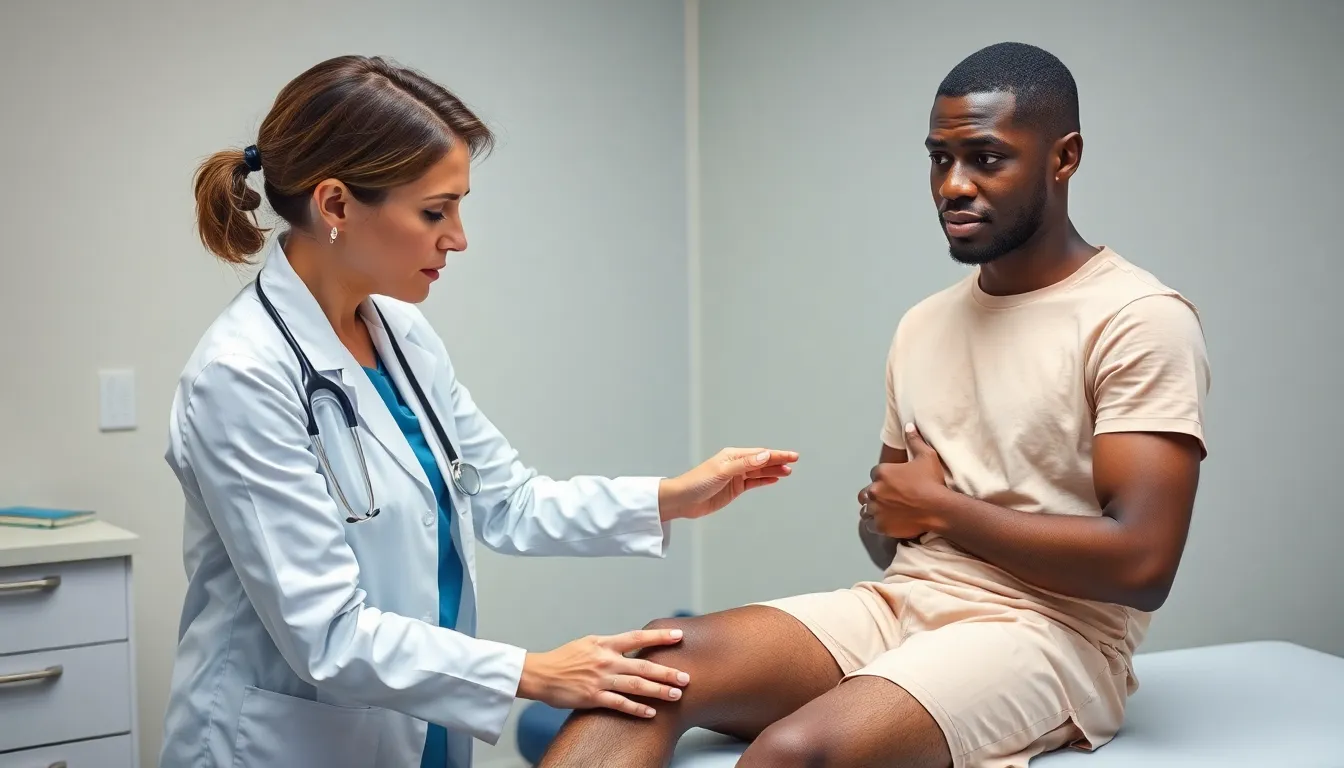Pavatalgia disease, often overlooked, can lead to significant discomfort and mobility issues. Understanding how to diagnose this condition is crucial for effective treatment and management. Patients may experience a range of symptoms, from localized pain to swelling, making it essential for healthcare providers to recognize the signs early on. Diagnosing pavatalgia involves a combination of clinical evaluation and diagnostic tests. By identifying the underlying causes, physicians can tailor a treatment plan that addresses both symptoms and root issues. This article will explore the key steps in diagnosing pavatalgia, empowering both patients and healthcare professionals with the knowledge needed to tackle this challenging condition.
How to Diagnose Pavatalgia Disease
Pavatalgia disease is a complex condition characterized by specific symptoms and diverse causes. A deeper understanding of the symptoms and causes can aid in accurate diagnosis and treatment.Symptoms of Pavatalgia
Symptoms often include persistent localized pain in the affected area, which may intensify with movement. Individuals might experience noticeable swelling and tenderness at the site. Reduced range of motion and stiffness can occur, impacting daily activities. Some patients report discomfort that worsens during specific tasks or physical exertion.Causes of Pavatalgia Disease
Pavatalgia may arise from various causes, including structural abnormalities in the musculoskeletal system. Injuries from accidents or repetitive strain can trigger symptom onset. Inflammatory conditions, such as arthritis or tendinitis, can also contribute to the pain and swelling associated with pavatalgia. Contributing factors may include genetic predispositions and environmental influences, emphasizing the need for a comprehensive evaluation.Diagnostic Procedures

Physical Examination
During the physical examination, the healthcare provider evaluates the affected area for signs of tenderness, swelling, and range of motion limitations. They assess the patient’s posture and gait to identify any abnormalities. Specific tests, such as pushing against resistance, help pinpoint pain sources or dysfunction in surrounding structures. This thorough evaluation establishes a baseline for further diagnostic steps.Medical History Review
Reviewing the patient’s medical history provides critical information for diagnosis. The provider gathers details about the onset and duration of symptoms, previous injuries, and any relevant family history of musculoskeletal disorders. Understanding the patient’s daily activities, including any repetitive motions or strain, can help identify contributing factors. This comprehensive history aids in creating a targeted approach to diagnosis and treatment.Imaging Tests
Imaging tests enhance the diagnostic process by providing insights into the internal structures. Commonly used methods include:| Test Type | Description |
|---|---|
| X-rays | Capture images to reveal bone abnormalities and fractures. |
| MRI | Provide detailed images of soft tissues, cartilage, and ligaments. |
| CT Scans | Offer cross-sectional images for a comprehensive view of structures. |
Differential Diagnosis
Accurate diagnosis of pavatalgia requires distinguishing it from several other conditions that present similar symptoms. Awareness of these conditions aids healthcare providers in developing appropriate treatment strategies.Conditions That Mimic Pavatalgia
-
- Plantar Fasciitis: Characterized by heel pain and discomfort during initial steps, plantar fasciitis can present similar localized pain in the foot arch.
-
- Achilles Tendinitis: Involves pain along the back of the heel and lower leg, often worsening with activity, resembling the symptoms of pavatalgia.
-
- Osteoarthritis: This degenerative joint disease results in stiffness, swelling, and pain, which may be mistaken for pavatalgia, especially in the foot.
-
- Bursitis: When the bursae become inflamed, they cause localized pain and swelling that can emulate pavatalgia symptoms.
-
- Gout: This form of arthritis leads to sudden, intense joint pain and swelling, often affecting the big toe, which can easily be confused with pavatalgia.
-
- Peripheral Neuropathy: Nerve damage can cause pain and numbness in the feet, potentially overlapping with pavatalgia’s symptoms.
Importance of Accurate Diagnosis
Accurate diagnosis of pavatalgia is crucial for effective management and treatment. Misdiagnosis can lead to inappropriate therapies, resulting in persistent pain and reduced mobility. Early identification of pavatalgia ensures timely intervention, mitigating complications and improving quality of life. Additionally, distinguishing pavatalgia from mimicking conditions allows for targeted treatment, optimizing healing and recovery for patients.Treatment Options
Effective treatment options for pavatalgia disease focus on alleviating pain, reducing inflammation, and improving mobility. Healthcare providers often tailor treatment plans to individual patient needs based on the severity of symptoms and underlying causes.-
- Medications: Nonsteroidal anti-inflammatory drugs (NSAIDs) provide relief from pain and inflammation. Examples include ibuprofen and naproxen. In cases of severe discomfort, corticosteroids may be prescribed to reduce inflammation.
-
- Physical therapy: Targeted physical therapy helps strengthen muscles, improve flexibility, and enhance joint function. Therapists design specific exercise regimes to address the individual’s limitations and goals.
-
- Orthotic devices: Custom orthotics, such as shoe inserts, can correct structural imbalances, reduce pressure on affected areas, and enhance overall foot function. These aids support the arch and provide cushioning, promoting comfort during daily activities.
-
- Injections: Corticosteroid injections may deliver temporary relief by directly targeting inflamed areas. Additionally, platelet-rich plasma (PRP) therapy offers regenerative properties, promoting healing and reducing pain.
-
- Surgery: For patients with severe structural abnormalities that do not respond to conservative treatments, surgical intervention may be indicated. Procedures can correct deformities or remove damaged tissues, ultimately restoring function.
-
- Lifestyle modifications: Implementing lifestyle changes can significantly improve outcomes. Patients should consider weight management, adopting low-impact exercises, and modifying activities to prevent exacerbation of symptoms.
-
- Alternative therapies: Some patients find relief through acupuncture or chiropractic treatments. These modalities focus on alleviating pain and improving overall body function.

